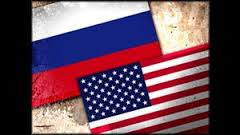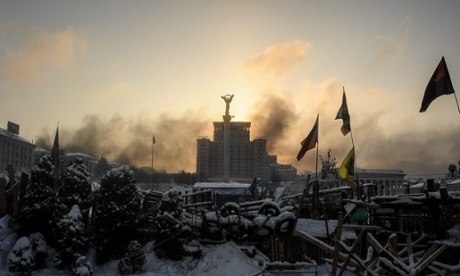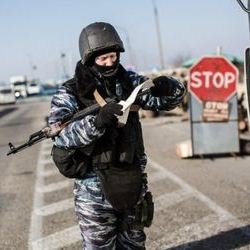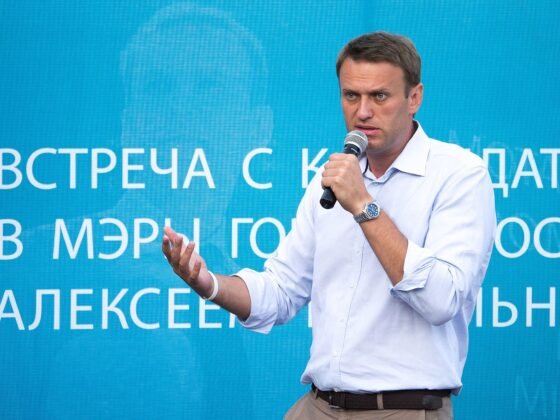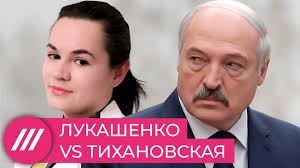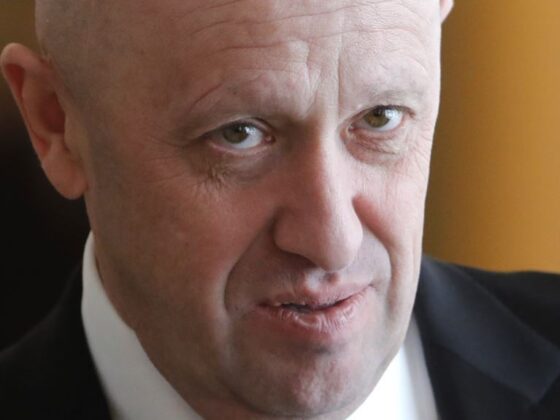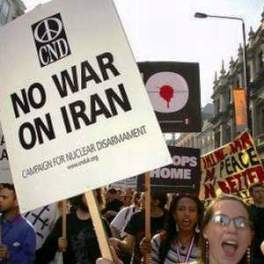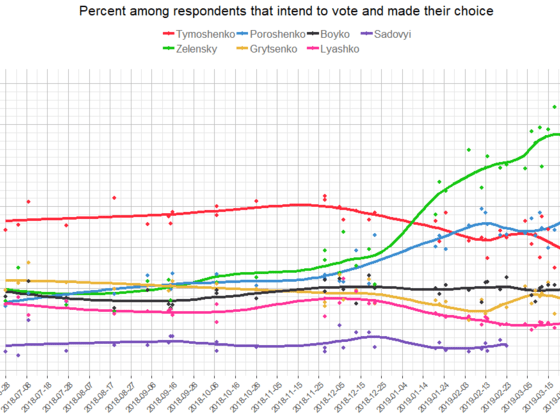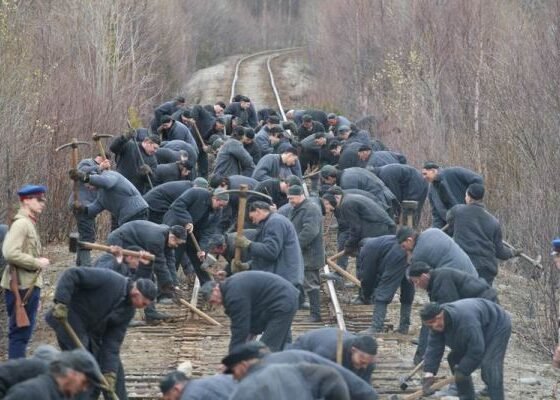(Washington Post) More than 20 years since the U.S.S.R. disappeared, Russia’s incursion into Ukraine is renewing old rivalries and sparking talk of a new Cold War, with former KGB officer Vladimir Putin serving as the West’s latest foil in Moscow. But how apt is the comparison? Let’s examine some myths that endure about the East-West stalemate that defined generations.
1. During the Cold War, we knew who the enemy was.
Throughout the Cold War, fierce disagreements often arose about the nature of the threat. Debate raged in the late 1940s and 1950s about the danger posed by American communists and others with suspect loyalties. After President Harry Truman sent U.S. forces to the Korean Peninsula in 1950, some in Congress warned that getting bogged down in Asia would divert forces from the real threat Joseph Stalin posed to Europe. Protests against the Vietnam War in the 1960s and early 1970s once again raised the question of the enemy: Was it China, the Soviet Union, the Vietnamese communists? Similar questions emerged in the 1980s in debates about aid to anti-communist guerillas in Nicaragua. America’s main target changed with the times. Mao Zedong’s China was once seen as a great danger, but after China and the Soviet Union clashed in 1969, the U.S. government pursued a far-reaching rapprochement with Beijing. The United States also established a detente with the Soviet Union in the early 1970s, as did allies in Europe. When U.S.-Soviet tensions resurfaced in the late 1970s and early 1980s, Western Europeans preserved their own detente with the Soviet bloc.
2. America’s winning strategy in the Cold War can be summarized in one word: containment.
U.S. foreign policy was never guided by a single strategy. In important instances, the United States did not even attempt to contain the spread of Soviet influence, instead accepting the victories achieved by communist and leftist forces. After Soviet-backed communists seized power in Czechoslovakia in 1948 and China in 1949, the United States took no military or covert action to reverse those encroachments. When Washington did attempt to contain Soviet influence, the record was mixed. U.S. forces rebuffed North Korea’s occupation of South Korea and blocked Soviet inroads to Western Europe and Japan. But in other cases, efforts to prevent communist gains proved spectacularly unsuccessful, especially in Indochina. Even in Afghanistan in the 1980s, covert aid to anti-communist guerrillas did not succeed in preventing the extension of Soviet influence. Although the U.S.-backed resistance helped spur Mikhail Gorbachev’s decision to pull out Soviet troops, the communist government in Kabul survived until the U.S.S.R. collapsed. At times, U.S. officials tried to roll back leftist regimes that were already in place. This goal was achieved by covert operations in Iran in 1953, Guatemala in 1954, Indonesia in 1965, Chile in 1973 and Nicaragua in the 1980s; and by unilateral military action in the Dominican Republic in 1965 and Grenada in 1983. Unsuccessful attempts at roll back were made against Cuba in 1961 and Nicaragua in the 1980s.The United States also used diplomacy and economic and military assistance to forge ties with countries that broke away from the Soviet sphere, notably Yugoslavia after 1948, China in the 1970s and Egypt after 1973. Containment was a slogan, not a guide to policy.
3. Compared with today’s terrorism threat, the Cold War was a time of stability.
In May 2007, The Washington Post’s David Ignatius published a column claiming that “the bipolar world of the Cold War had an inherent stability. The two superpowers understood the rules of the game.” The post-Cold War world, he explained, “makes the Cold War seem like the good old days.” Yet stability during the Cold War was often nonexistent. Crises repeatedly emerged between the United States and the Soviet Union, and between these countries and China, including showdowns over Turkey and Iran right after World War II, the Berlin Blockade of 1948-49, the Korean War, the Quemoy and Matsu crises of the 1950s, and the Cuban missile crisis, which brought the world close to nuclear war. And Chinese and Soviet military forces took part in operations against U.S. forces during the Vietnam War. Terrorism, meanwhile, did not begin with the Sept. 11, 2001, attacks — it was a major aspect of the Cold War. The average annual number of international terrorist attacks was higher in the late 1960s and early 1970s than it has been since 1989. In just a year in 1971-72, the Palestinian terrorist group Black September orchestrated a series of grisly attacks, including the assassination of the Jordanian prime minister, a massacre at Israel’s Lod Airport, and the kidnapping and murder of Israeli athletes at the Munich Olympics. Major terrorist groups that emerged during the Cold War were funded by the Soviet bloc. Hardly the “good old days.”
4. Costly as the arms race was, it brought a Long Peace.
The characterization of the Cold War as a “Long Peace,” a term coined in the 1980s by the historian John Gaddis, makes sense only if we overlook the devastating wars that resulted from (or were aggravated by) the Cold War. Statistics compiled by the Human Security Report Project show that the Korean War, the Vietnam War, civil wars in Central America and southern Africa, a succession of wars in the Middle East, and the Soviet war in Afghanistan resulted in the deaths of millions of people, most of whom were civilians. Millions more were slaughtered by their governments, as in Mao’s China and Pol Pot’s Cambodia. Large numbers also died under regimes in Latin America and Africa that were backed by Western governments because of Cold War pressures. Those who characterize the Cold War as a Long Peace because no large-scale war occurred directly between the United States and the Soviet Union devalue the word “peace.”
5. With Putin in Russia, the Cold War is back.
Putin’s instincts are authoritarian, and he has never outgrown his KGB years. But the country he leads is not the Soviet Union. Post-Soviet Russia is much weaker than the U.S.S.R. and is far short of a global superpower. The Russian army is only one-fifth the size of the Soviet army. Nor does Russia have any of the Soviet Union’s ideological appeal. Communism is now thoroughly discredited, but during most of the Cold War, Marxist ideology found ready followers in many Third World countries and even in the West, particularly in France and Italy, which had large communist parties. Russia has no such charm today. Moreover, even under Putin, Russia is a much freer place than the Soviet Union was. A true U.S. partnership with Russia may be impossible, but the two sides do have overlapping interests in dealing with terrorism, environmental issues, public health problems, human trafficking and illegal arms dealing. Putin seeems intent on poisoning U.S.-Russian relations for now, but fears of a new Cold War are misplaced.
See the Opinion by Mark Kramer © Washington Post
Mark Kramer is director of Cold War Studies and a senior fellow at Harvard University’s Davis Center.

